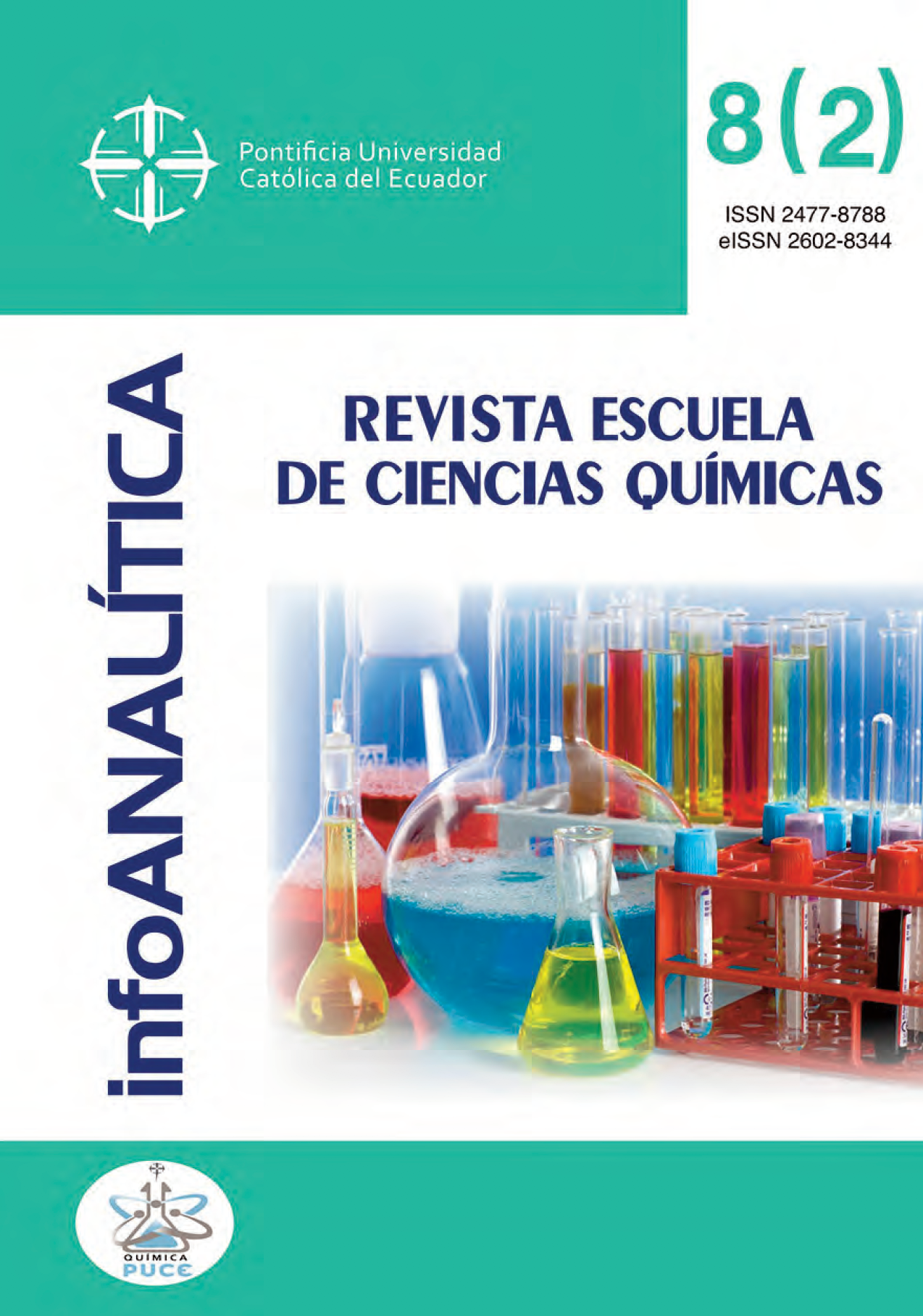Use of gumbel distribution functions for the fitting and deconvolution of differential thermal analysis thermograms
Main Article Content
Abstract
We present a proposal for the empirical fit of curves corresponding to phase transitions in measurements obtained using Differential Thermal Analysis (DTA). The family of functions for fit is known as the Gumbel functions. These functions have asymmetrical characteristics that resemble those of typical DTA peaks, different from the symmetrical functions usually used for the adjustment of peaks (such as Gaussian or Lorentzian). The adjustment process was performed with DTA measurements carried out with samples of InxMn(1-x)Sb compounds, which show the presence of two phases, InSb and MnSb. In these phases, depending on the value of x, phase transitions are observed that may or may not be simultaneous in temperature. When working with individual phase transition curves, Gumbel functions fits the curves with linear correlation coefficients (R2) higher than 0.98 –for both fusion and solidification transitions– which demonstrates the experimental data’s proper fit. This type of fit’s value is demonstrated by its use in a system where there are simultaneous phase transitions in temperature. In this case it is shown how, with the Gumbel functions, it is possible to separate these superimposed signals. These independent signals may provide access to information such as the phase transition temperature and the enthalpy of transformation for each of the compounds present in the mixture, something presently difficult to attain in simultaneous DTA signals.
Downloads
Article Details
- The authors agree to respect the academic information of other authors, and to assign the copyrights to the journal infoANALÍTICA, so that the article can be edited, published and distributed.
- The content of the scientific articles and the publications that appear in the journal is the exclusive responsibility of their authors. The distribution of the articles published in the infoANALÍTICA Journal is done under a Creative Commons Reconocimiento-CompartirIgual 4.0 Internacional License.
References
Akash, M. S. H., & Rehman, K. (2020). Differential Thermal Analysis Essentials of Pharmaceutical Analysis (pp. 207-213): Springer.
Awschalom, D. D., Loss, D., & Samarth, N. (2013). Semiconductor spintronics and quantum computation: Springer Science & Business Media.
Borchardt, H. J., & Daniels, F. (1957). The application of differential thermal analysis to the study of reaction kinetics1. Journal of the American Chemical Society, 79(1), 41-46. doi: 10.1021/ja01558a009
Clavaguera, N., Clavaguera-Mora, M., & Fontana, M. (1998). Accuracy in the experimental calorimetric study of the crystallization kinetics and predictive transformation diagrams: Application to a Ga–Te amorphous alloy. Journal of Materials research, 13(3), 744-753. doi: 10.1557/JMR.1998.0094
Chang, K.-H. (2015). Chapter 10 - Reliability Analysis. In K.-H. Chang (Ed.), e-Design (pp. 523-595). Boston: Academic Press.
Charsley, E., Price, D., Hunter, N., Gabbott, P., Kett, V., Gaisford, S., . . . Scowen, I. (2019). Principles of thermal analysis and calorimetry: Royal society of chemistry.
Gorgoso-Varela, J. J., & Rojo-Alboreca, A. (2014). Use of Gumbel and Weibull functions to model extreme values of diameter distributions in forest stands. Annals of forest science, 71(7), 741-750. doi: 10.1007/s13595-014-0369-1
Gumbel, E. J. (1954). Statistical theory of extreme values and some practical applications. NBS Applied Mathematics Series, 33.
Hershfield, D. M. (1973). On the probability of extreme rainfall events. Bulletin of the American Meteorological Society, 54(10), 1013-1018. doi: 10.1016/j.ejrh.2015.06.007
Janssen, Y., Nicasio, J., Dudley, K., Xia, B., & Simonson, J. (2020). Development of in-situ differential thermal analysis for crystal growth experiments. Bulletin of the American Physical Society.
Katayama-Yoshida, H., & Sato, K. (2003). Spin and charge control method of ternary II–VI and III–V magnetic semiconductors for spintronics: theory vs. experiment. Journal of Physics and Chemistry of Solids, 64(9-10), 1447-1452. doi: 10.1016/S0022-3697(03)00126-4
Kramer, E. (1992). Materials Science and Technology: A Comprehensive Treatment (Vol. 5: Phase Transformations in Materials).
Liu, C., Li, Y., & Zeng, Y. (2010). Progress in antimonide based III-V compound semiconductors and devices. Engineering, 2(08), 617. doi: 10.4236/eng.2010.28079
Nadarajah, S. (2006). The exponentiated Gumbel distribution with climate application. Environmetrics: The official journal of the International Environmetrics Society, 17(1), 13-23. doi: 10.1002/env.739
Novotortsev, V., Kochura, A., Marenkin, S., Fedorchenko, I., Drogunov, S., Lashkul, A., & Lähderanta, E. (2011). Synthesis and magnetic properties of the InSb-MnSb eutectic. Russian Journal of Inorganic Chemistry, 56(12), 1951-1956. doi: 10.1134/S0036023611120400
Razeghi, M. (2004). Antimony Based Materials for Electro-Optics Semiconductor Nanostructures for Optoelectronic Applications.
Roisnel, T., & Rodríquez-Carvajal, J. (2001). WinPLOTR: a windows tool for powder diffraction pattern analysis. Paper presented at the Materials Science Forum.
Školáková, A., Průša, F., & Novák, P. (2020). Thermal analysis of FeAl intermetallic compound sintered at heating rate of 300° C/min. Journal of Alloys and Compounds, 819, 152978. doi: 10.1016/j.jallcom.2019.152978
Verma, U., Devi, N., Sharma, S., & Jensen, P. (2011). Spin-polarized first-principles study of ferromagnetism in zinc-blende In 1− x Mn x Sb. The European Physical Journal B, 81(4), 381-386. doi: 10.1140/epjb/e2011-20047-8

